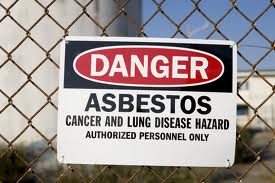- January 21, 2013
- 0

Asbestos Cancer Facts and Statistics
An asbestos-related cancer is any cancer that can be caused by asbestos exposure. Lung cancer is the most frequently diagnosed asbestos-related cancer in the United States, affecting about 4,800 people each year.
Mesothelioma is the second-most diagnosed cancer caused by asbestos. It affects about 3,000 people in the U.S. each year and it is almost exclusively caused by the naturally occurring mineral. Two other cancers confirmed to be caused by asbestos include ovarian cancer and laryngeal cancer.
Other cancers like gastrointestinal cancer and colorectal cancer have an association with asbestos, but more research is needed to establish a complete causal relationship. In some studies, an increased risk for cancer of the esophagus and kidney has been reported among those exposed to asbestos.
Confirmed Asbestos-Related Cancers
The four cancers determined to have a causal relationship with asbestos include lung cancer, mesothelioma cancer, ovarian cancer and laryngeal cancer. Facts and stats on each cancer include:
Lung Cancer
• The National Cancer Institute first confirmed that asbestos causes lung cancer in 1942.
• In 1986, the Occupational Safety and Health Administration stated lung cancer was the greatest risk for Americans who faced asbestos hazards at work.
• About 4 percent of all lung cancer cases in the U.S. are attributed to asbestos exposure.
• Most asbestos-related lung cancers take between 15 and 35 years to develop from the time of initial asbestos exposure.
• The combination of asbestos exposure and smoking significantly increases the risk for developing lung cancer.
Mesothelioma
• Mesothelioma was definitively linked to asbestos exposure for the first time in 1964.
• Asbestos exposure is almost exclusively responsible for all cases of mesothelioma.
• Symptoms of mesothelioma, which include coughing, shortness of breath, chest pain and abdominal pain, typically take between 20 and 50 years to arise after exposure.
• The average age for mesothelioma patients at diagnosis is 62 years old.
• With no known cure, mesothelioma treatment attempts to reduce symptoms, improve quality of life and prolong survival.
Ovarian Cancer
• Ovarian cancer is the fifth most common cancer and cause of death in women.
• A 1982 study found that women with ovarian cancer were about three times more likely to have used talcum powder on their genital area. Talcum powders have been known to contain asbestos.
• Another study from 1999 found that women who used talcum powder on their genital area had a 60 percent increase in risk for developing ovarian cancer.
• A 50 percent increase in risk for ovarian cancer was found among women whose husbands used talc on their genitals.
Laryngeal Cancer
• The International Agency for Research on Cancer confirmed in March 2009 that asbestos causes laryngeal cancer.
• Laryngeal cancer has a causal relationship with asbestos because it lies directly along the path in which airborne asbestos fibers are inhaled.
• The average age at diagnosis is 65 years old.
• An estimated 12,740 cases were expected in the U.S. in 2011.
Gastrointestinal Cancer
• More than 275,000 people are diagnosed with gastrointestinal cancers in the U.S. each year.
• Gastrointestinal cancers can affect the esophagus, stomach, liver, gallbladder and other digestive organs.
• Although some studies have demonstrated a clear association between asbestos exposure and gastrointestinal cancers, many researchers believe more independent studies are needed to confirm the association.
• According to the Environmental Working Group, approximately 1,200 asbestos-related gastrointestinal cancers are diagnosed each year.
Colorectal Cancer
• Colorectal cancer can develop in the colon, rectum or appendix.
• In 1986, the Occupational Safety and Health Administration added colorectal cancer to its list of cancers that physicians should look for during asbestos examinations.
• Some studies show an association between colorectal cancer and asbestos exposure, but more research is needed to support it.
Increased Cancer Risk
Additionally, there is an elevated risk of esophageal and kidney cancer among those exposed to asbestos, but studies have been inconclusive on these cancers.
Esophageal Cancer
• More than 16,000 cases are reported each year in the U.S.
• The average five-year survival rate for esophageal cancer is about 16 percent.
• Some studies have shown an increased risk for esophageal cancer in those exposed to asbestos, but such results are limited and need further investigation.
Kidney Cancer
• There are mixed reviews on whether kidney cancer can be caused by asbestos exposure.
• Some studies found results that indicated an increase in risk in workers exposed to high levels of asbestos.
• About 60,000 cases of kidney cancer are diagnosed in the U.S. each year.
Source: http://www.asbestos.com/cancer/facts.php
- January 21, 2013
- asbestos




